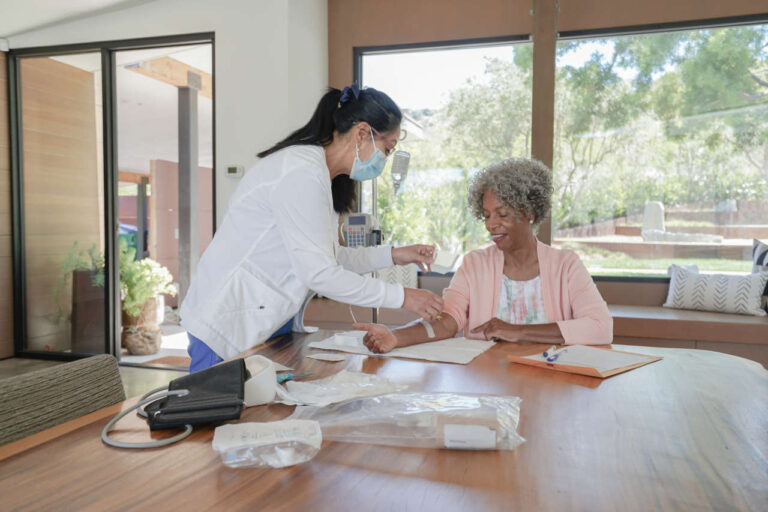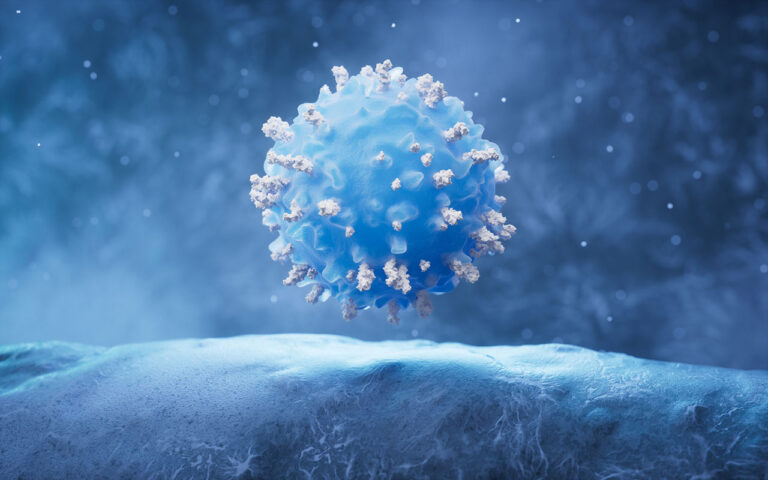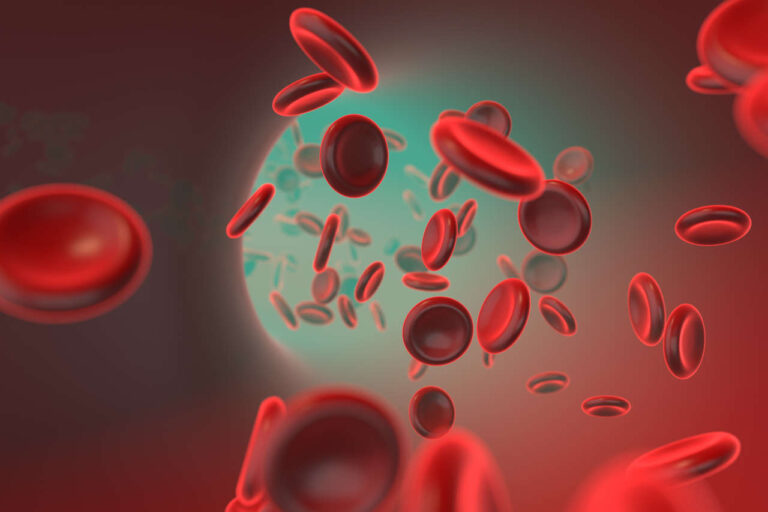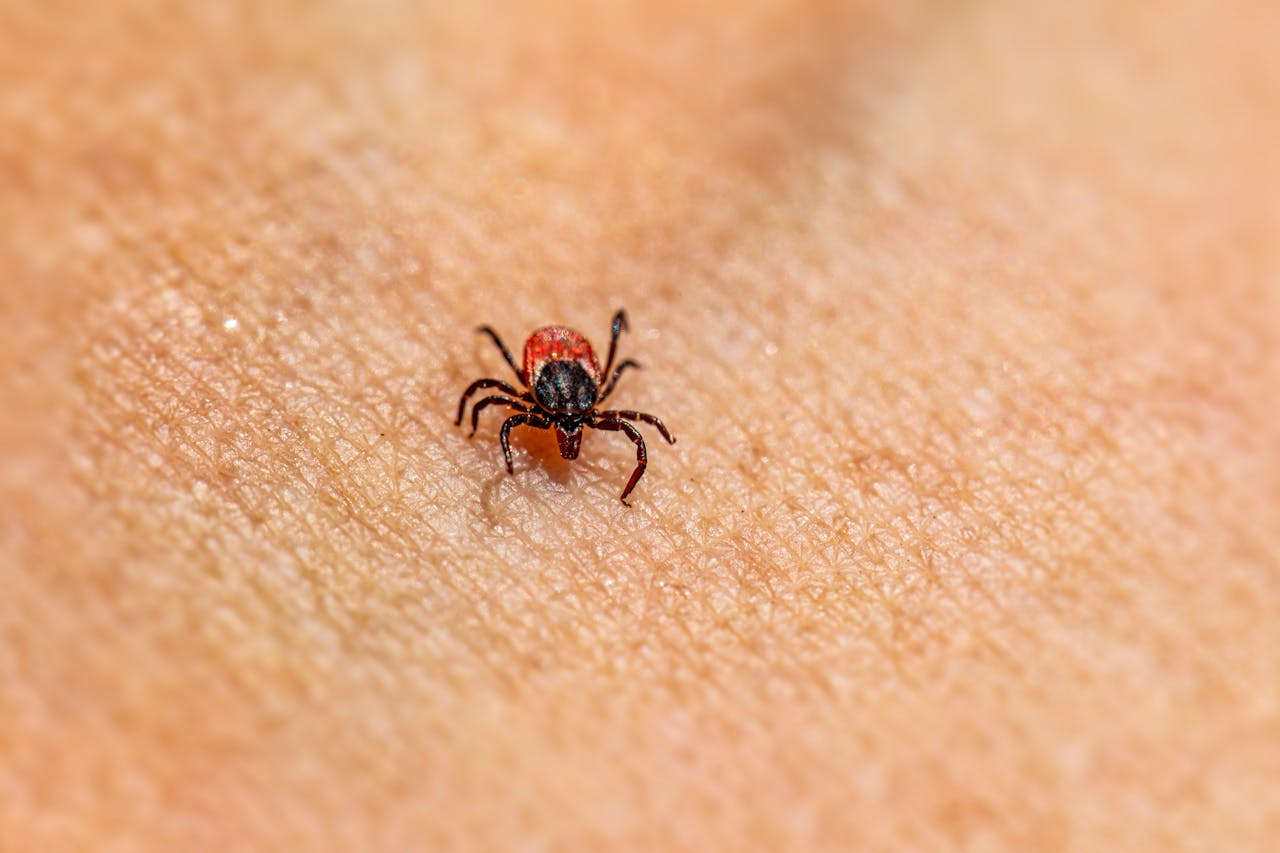
La enfermedad de Lyme es una de las enfermedades transmitidas por garrapatas más comunes en el mundo. Según las estadísticas de los Centros para el Control y la Prevención de Enfermedades (CDC), Afecta a más de 30.000 personas anualmente sólo en los EE.UU.
Información sobre el tratamiento | Obtener autorización previa para inmunoglobulina intravenosa
Sin embargo, los tratamientos para esta enfermedad son limitados. Los antibióticos son la primera opción que la mayoría de los médicos consideran. Sin embargo, debido al aumento de la resistencia a los antibióticos, podrían no ser eficaces en el futuro. Otro posible tratamiento para la enfermedad de Lyme podría ser la inmunoglobulina intravenosa (IVIG).
La inmunoglobulina intravenosa (IVIG) tiene el potencial de mejorar la función inmunitaria y combatir la enfermedad de Lyme. Sin embargo, su eficacia aún es objeto de debate.
Hoy examinaremos la investigación sobre las infusiones de IgIV para la enfermedad de Lyme para determinar si esta opción puede ser un tratamiento fiable para las personas afectadas. Primero, conozcamos mejor la enfermedad en sí.
¿Qué es la enfermedad de Lyme?
enfermedad de Lyme Es una enfermedad infecciosa identificada por primera vez en la década de 1970 en Old Lyme, Connecticut. En América del Norte, es causada por Borrelia burgdorferi y Borrelia mayonii bacterias transferidas al torrente sanguíneo a través de la picadura de una garrapata de ciervo infectada.
Quienes buscan tratamiento con IgIV para la enfermedad de Lyme suelen ser personas que viven en zonas boscosas, donde habitan la mayoría de estos insectos. Las garrapatas comunes de los animales no transmiten este tipo de infección.
Las garrapatas de patas negras se convierten en portadoras de este tipo específico de bacteria cuando pican a un ciervo o ave infectada. Después de estar en la piel entre 36 y 48 horas,... transmitir la bacteria A usted.
Síntomas de la enfermedad de Lyme
La enfermedad de Lyme evoluciona en etapas, cada una con síntomas específicos que a veces pueden superponerse. Las infusiones de IgIV se utilizan en las etapas más avanzadas de la enfermedad de Lyme.
Veamos cada etapa con más detalle.
Etapa uno: enfermedad de Lyme localizada temprana
Los médicos generalmente no recetan IgIV para esta etapa de la enfermedad de Lyme, que ocurre entre 3 y 30 días después de la picadura de garrapata.
El síntoma principal de esta etapa de la enfermedad es una erupción en forma de ojo de buey (eritema migratorio) en la picadura que desaparecerá gradualmente. Esta erupción puede sentirse caliente, pero no duele ni pica.
Otros síntomas de esta etapa incluyen:
- Escalofríos
- Fiebre
- Fatiga
- Dolor de garganta
- dolores de cabeza
- Dolor muscular
- Rigidez articular
- Problemas de visión
- Ganglios linfáticos agrandados
Etapa dos: enfermedad de Lyme de diseminación temprana
La segunda etapa de la enfermedad comienza un mes después de la picadura de garrapata y puede durar hasta cuatro meses. Esta etapa de la enfermedad de Lyme podría no ser adecuada para el tratamiento con IgIV.
La fase temprana diseminada es más peligrosa que la etapa anterior y significa la propagación de la infección por todo el cuerpo.
Los síntomas de esta etapa incluyen:
- Párpados hinchados
- latidos cardíacos irregulares
- Dolor de espalda, cadera y piernas
- Dolor ocular y pérdida de visión
- debilidad de los músculos faciales
- Erupciones en todo el cuerpo
- Dolor y rigidez en el cuello
- Entumecimiento en las manos y los pies
Etapa tres: enfermedad de Lyme de diseminación tardía
Las infusiones de IgIV son más útiles en esta etapa de la enfermedad de Lyme, conocida como fase diseminada tardía o persistente. Esta etapa puede ocurrir meses o incluso años después de la picadura.
Los síntomas peligrosos de esta etapa de la enfermedad de Lyme que requieren el uso de IgIV incluyen:
- Artritis de articulaciones grandes (rodillas, etc.)
- Trastornos cerebrales como la encefalopatía que conducen a:
- Dificultades para dormir
- Neblina mental
- Dificultad para concentrarse
- Pérdida temporal de memoria
- Entumecimiento de manos, brazos, piernas y pies.
- Afecciones cutáneas como la acrodermatitis crónica atrófica
La mayoría de las personas experimentan estos síntomas en cada etapa de la enfermedad. Sin embargo, es fundamental tener en cuenta que pueden coincidir. Algunas personas podrían no experimentar los síntomas de las primeras etapas y solo notar los signos posteriores.
Lo importante es consultar a su médico en cuanto empiece a notar cualquiera de estos síntomas. Cuanto antes trate la enfermedad de Lyme con IgIV o antibióticos, menos complicaciones experimentará.
¿Cómo se diagnostica la enfermedad de Lyme?
Antes de que los médicos receten infusiones de IgIV para la enfermedad de Lyme, deben realizar un diagnóstico correcto.
Si sospecha que le ha picado una garrapata y acude a su médico, lo primero que le preguntará es sobre sus síntomas. Revisará su historial médico y buscará signos de sarpullido.
También pueden solicitar las siguientes pruebas para hacer un diagnóstico definitivo y recetar IgIV para la enfermedad de Lyme si es correcto:
- Un ensayo inmunoabsorbente ligado a enzimas (ELISA)
- A Western blot Análisis para confirmar la evaluación ELISA positiva
- A reacción en cadena de la polimerasa Prueba (PCR)
Si tiene la enfermedad de Lyme, el siguiente paso es determinar el mejor tratamiento.
Tratamiento de la enfermedad de Lyme
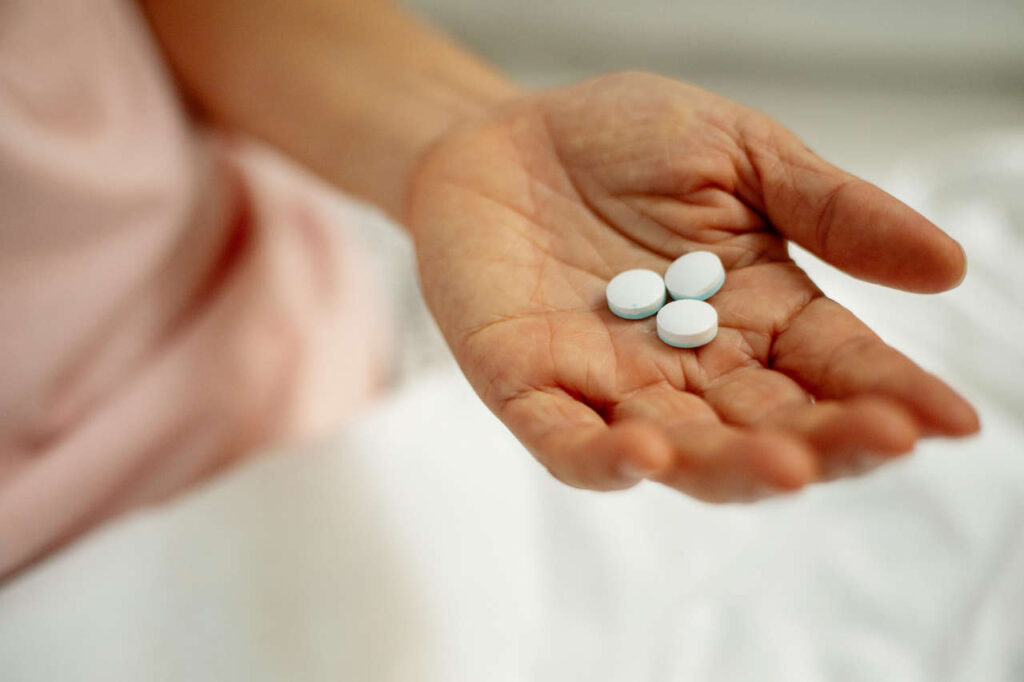
La primera línea de tratamiento para la enfermedad de Lyme en sus primeras etapas es un ciclo de antibióticosLos médicos generalmente recomiendan un tratamiento con doxiciclina, amoxicilina o cefuroxima axetilo para la mayoría de los pacientes, ya sean adultos o niños.
La duración del tratamiento depende del estadio de la enfermedad. Cuanto más precoz sea el estadio, más corto será el tratamiento.
En etapas más avanzadas de la enfermedad de Lyme, los médicos pueden considerar el tratamiento con infusión de IgIV.
Infusiones de IgIV para la enfermedad de Lyme
La inmunoglobulina intravenosa (IVIG) es una terapia de infusión basada en proteínas. Consiste en administrar soluciones concentradas de anticuerpos obtenidas del plasma de donantes sanos directamente al torrente sanguíneo del paciente.
El más común Condiciones que trata la IgIV Incluye trastornos autoinmunes y enfermedades inflamatorias. Sin embargo, este tratamiento también puede ser eficaz para enfermedades infecciosas como la enfermedad de Lyme.
Los anticuerpos sanos en La IgIV puede reforzar el sistema inmunológico y le dan al cuerpo una mejor oportunidad de combatir las bacterias. Pero ¿qué dicen las investigaciones sobre la eficacia de las infusiones de IgIV para la enfermedad de Lyme? Averigüémoslo.
¿Es eficaz la IgIV para la enfermedad de Lyme? Un análisis de los estudios

Si bien se necesitan más estudios para evaluar la efectividad de la terapia con inmunoglobulina en la enfermedad de Lyme, la investigación actual muestra resultados prometedores.
A continuación se presentan algunos de los estudios más destacados que evalúan la terapia con IgIV para esta enfermedad infecciosa.
Radiculoneuritis de Lyme tratada con inmunoglobulina intravenosa
La radiculoneuritis de Lyme es una complicación neurológica de la enfermedad de Lyme que puede causar dolor y entumecimiento en piernas, caderas y espalda. Su tratamiento se basa en antibióticos, pero un estudio examinó la eficacia de la inmunoglobulina intravenosa (IVIG) para esta complicación de la enfermedad de Lyme.
Este estudiar Se trató de un hombre de 68 años que se quejaba de dolor muscular y debilidad abdominal, lo que le impedía caminar. Tras una exploración, los médicos detectaron que también presentaba debilidad muscular en la cara y las extremidades superiores e inferiores.
Le administraron 0,4 g/kg de IgIV para la enfermedad de Lyme durante cinco días. Al cuarto día, observaron mejoras significativas en sus síntomas. Pudo volver a caminar y correr.
El tratamiento con IgIV continuó durante seis meses. Durante este tiempo, recibió una infusión mensual y permaneció asintomático sin necesidad de otros tratamientos.
IgIV para la polineuropatía desmielinizante aguda asociada a la enfermedad de Lyme
Otro estudiar Se trató de un paciente masculino de 58 años que ingresó al hospital con signos de mialgias difusas, escalofríos y fiebre. Al ingresar, su fuerza muscular era normal. Sin embargo, sus músculos se debilitaron durante su estancia en el hospital.
Esta debilidad era más pronunciada en los hombros, las extremidades inferiores, los flexores de la cadera y los extensores de la rodilla. Una electromiografía (EMG) realizada en la segunda semana mostró signos de polineuropatía sensitivomotora desmielinizante, y un análisis de sangre occidental confirmó la enfermedad de Lyme.
Comenzó a recibir IgIV para la enfermedad de Lyme el día 33. Los médicos le administraron un total de 5 dosis durante cinco días.
El día 38, el paciente fue dado de alta con mejoría en su fuerza muscular y la capacidad de caminar con la ayuda de un dispositivo de asistencia. Dos meses después, recuperó completamente su fuerza muscular y pudo retomar sus actividades habituales.
Infusiones de IgIV para la enfermedad de Lyme y PANDAS
Uno de los grupos que más sufren la enfermedad de Lyme son los niños de entre 5 y 14 años. Uno estudiar Se utilizó una combinación de antibióticos e IgIV para tratar la enfermedad de Lyme en una paciente de 7 años con signos serológicos de la enfermedad.
Esta paciente había visitado una zona endémica de garrapatas en EE. UU. seis meses antes con sus padres y, al momento de la consulta, presentaba múltiples síntomas neuropsiquiátricos. Además, cumplía los criterios de los trastornos neuropsiquiátricos autoinmunes pediátricos asociados a infecciones estreptocócicas (PANDAS).
Los médicos le recetaron antibióticos y tres tratamientos. Tratamiento de infusión de IgIVSe recuperó completamente de la enfermedad y quedó libre de cualquier síntoma.
Últimas palabras sobre la eficacia de las infusiones de IgIV para la enfermedad de Lyme
Como se puede observar en los estudios anteriores, es posible tratar la enfermedad de Lyme con IgIV. La terapia con inmunoglobulina intravenosa puede ser una solución segura y eficaz para combatir esta enfermedad infecciosa.
Sin embargo, se requieren más estudios clínicos para determinar la dosis óptima y la duración del tratamiento. Estos estudios también deberían analizar los antibióticos que serán más eficaces con la IgIV contra la enfermedad de Lyme.


